The Best Guide to 1N4148 Diode Equivalents
1N4148 diodes are mainly used for fast switching and are called high-speed switching diodes. The 1N4148 diode only allows current to flow in one direction. 1N4148 diode, with a maximum current carrying capacity of 300mA, can withstand peaks up to 2A. The 1N4148 diode features a fast recovery time of 8ns at a forward current of 10mA.
1N4148 Diode Overview: Flexible high-frequency switching diodes
A diode is an electronic component that only permits the flow of current in one direction, such as on a one-way street where traffic may only move in one direction. The 1N4148 diode likewise functions similarly; it has been a well-known silicon diode for a long time and is produced by several companies that make electronic components. Its fascinating characteristics, functionality in a small package, and inexpensive cost are the primary factors in its widespread use in electronics. It is a fast-switching diode with a speed of 4 nanoseconds with 100V reverse and with a maximum power dissipation of 0.5W. It is available in many different types of packages, such as DO-35 glass and many other SMD packages.
1N4148 Diode Pinout: Anode and Cathode
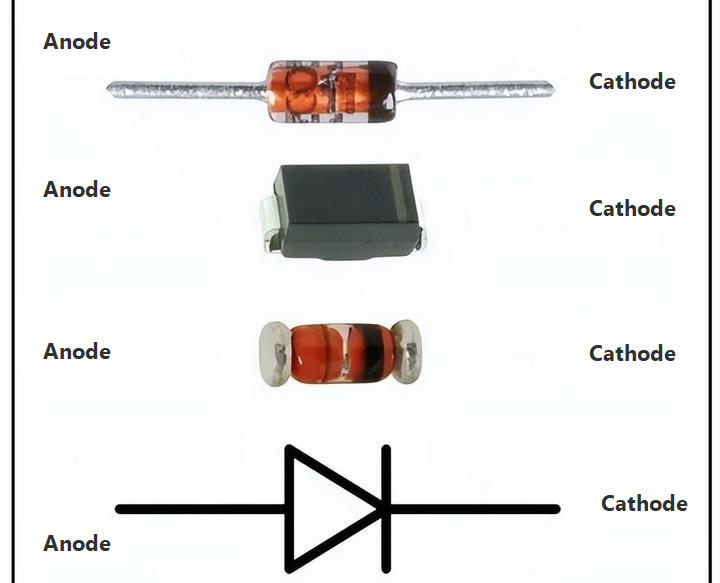
Figure1-1N414 Diode Pinout
1N4148 Pin Configuration
|
Pin No. |
Pin Name |
Description |
|
1 |
Anode |
Current always Enters through the Anode |
|
2 |
Cathode |
Current always Exits through Cathode |
1N4148 Specifications: Multiple Package Type
- Package Type: DO-35、DO-14、SOD123、LL34、SOD323、SOT23、SOD523、0805
- Didoe Type: Silicon Epitaxial Fast Switching Diode
- Max Repetitive Reverse Voltage is: 100 Volts
- Max Average Rectified Current is: 15A or 150mA
- Max Power Dissipation is: 5W
- Reverse Voltage is: 75V
- Max Storage & Operating temperature Should Be: -65 to +175 Centigrade
1N4148 Replacement and Equivalent
-
1N914: This is essentially the same as the 1N4148 and is often considered interchangeable. The only real difference is in some of the electrical specifications, but for many applications, they can be used interchangeably.
-
1N4448: This is another equivalent to the 1N4148. Like the 1N914, it shares similar electrical characteristics and can often be used in its place.
-
1N914B and 1N4448B: These are just improved versions of the 1N914 and 1N4448 diodes, respectively. They usually have better specifications, but they can still be used as substitutes for the 1N4148.
-
OA47 and OA90: These are germanium diodes that can be used as alternatives to the 1N4148 in some applications. However, it's important to note that they have different electrical characteristics, so they may not be suitable for all situations.
-
BA682 and BA684: These are silicon switching diodes that can also be used as substitutes for the 1N4148.
1N4148 diode working principle
Like a signal diode, the 1N4148 diode only permits current to flow in one direction, from anode to cathode.
The 1N4148 diode operates in two different ways depending on how it is linked across the voltage source: forward-biased and reverse-biased.
It functions as a closed switch when operating in the forward-biased mode and as an open switch when operating in the reverse-biased mode.
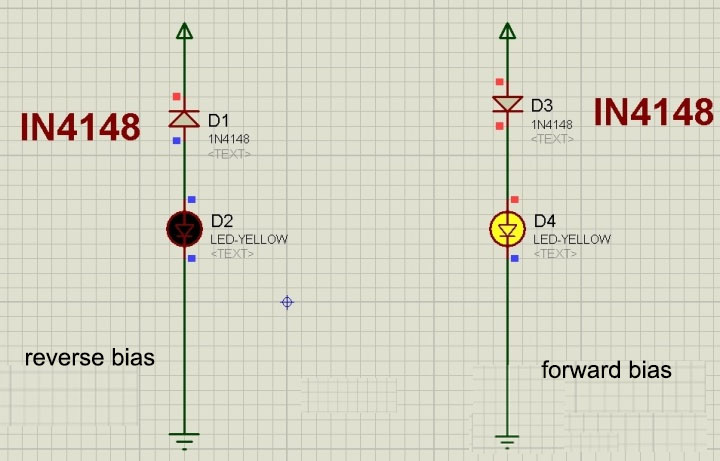
Figure2-working principle
The following figure shows the equivalent circuit of two diode states:
1. Mode of forward bias
It functions as a closed switch and permits electricity to pass through it while in the forward bias mode.
2. Backward bias mode
It functions as an open switch in reverse bias mode, blocking current flow.
The diode exhibits high resistance below a specific voltage (cutoff voltage), and low resistance above that particular voltage.
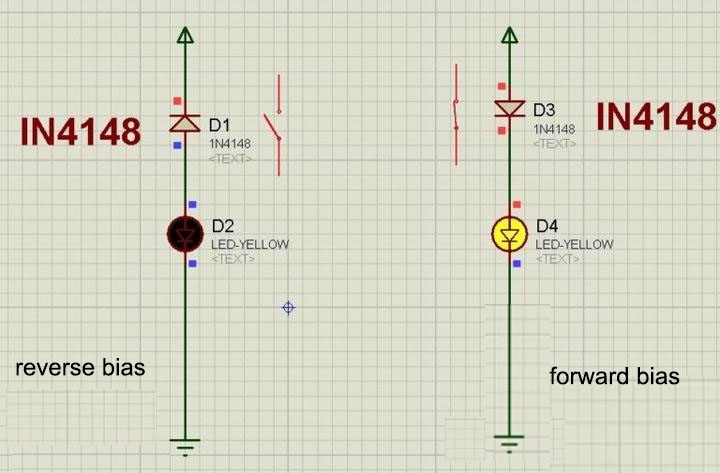
Figure3-equivalent circuit of two diode states
N4148 diode Manufacture
Where are N4148 diode diodes produced? Here we mainly introduce some brands:
-
Vishay Semiconductors - Vishay is a global manufacturer of discrete semiconductors and passive electronic components.
-
ON Semiconductor - ON Semiconductor is a large semiconductor manufacturer with a wide range of products, including diodes like the 1N4148.
-
Fairchild Semiconductor - Acquired by ON Semiconductor, Fairchild Semiconductor was a major player in the semiconductor industry before the acquisition.
-
Diodes Incorporated - Diodes Incorporated is a manufacturer and supplier of diodes, transistors, and other discrete semiconductor components.
-
NXP Semiconductors - NXP is a global semiconductor manufacturer that produces a wide range of electronic components.
-
Taiwan Semiconductor Manufacturing Company (TSMC) - TSMC is a leading global semiconductor foundry that manufactures a variety of semiconductor components for different companies.
-
Central Semiconductor - Central Semiconductor is a manufacturer of discrete semiconductors, including diodes.
-
Microsemi (acquired by Microchip Technology) - Microchip Technology is a well-known semiconductor company, and they now own the Microsemi brand.
I F(max) and PIV: 1N4148 parameters
- Maximum forward current
As the name suggests, the maximum forward current (I F(max)) is the most forward current permitted to pass through the diode. Because a diode has relatively little "on" resistance across the PN junction while it is conducting under forward bias, power is lost via the junction as heat (Ohm's Law).
More heat will then accumulate on the junction as a result of exceeding its (IF(max)) value, and the diode will eventually fail due to thermal overload, frequently with disastrous results. The easiest way to disperse heat produced by a diode when it is working close to its maximum rated current is to add more cooling.
The 1N4148 diode has a maximum current rating of about 150mA and power dissipation of 500mW at 25°C. Then a resistor must be placed in series with the diode to limit the forward current, ( I F(max) ) through it below this value.
- Peak reverse voltage
Peak reverse voltage (PIV) or maximum reverse voltage (VR(max)) is the maximum allowable reverse operating voltage that can be applied across a diode without causing reverse breakdown and damage to the device.
Therefore, this rating is usually lower than the "avalanche breakdown" level on the reverse bias characteristic curve. Typical values for VR(max) range from a few volts to thousands of volts and must be considered when replacing diodes.
- Total power consumption
The maximum amount of power that a diode can dissipate while it is forward-biased (conducting) is indicated by the total power dissipation (P D(max)) rating. The signal diode experiences power dissipation (loss) as heat when current passes through it because the biasing of the PN junction is imperfect and introduces some resistance to the current flow.
- Maximum working temperature
The junction temperature (T J) of the diode and the maximum power dissipation are related to the maximum operating temperature. In degrees Celsius per watt (o C/W), it is the highest temperature that can be reached before the diode's structure deteriorates.
Because of how closely this value relates to the device's maximum forward current, the junction temperature will not be surpassed at this value. The maximum forward current is typically utilized for two or more ambient temperature values because it also depends on the ambient temperature in which the device operates.
Three main parameters must be considered when selecting or replacing diodes, mainly:
- Reverse voltage rating
- Forward current rating
- Forward Power Dissipation Rating
The Applications Galore: 1N4148 Diode in the Real World
- Circuit diagram of temperature sensor using 1N4148 diode
The image below shows the temperature sensor circuit diagram utilizing a 1N4148 diode. There are various electronic components with unique functionality available. One of them, the 1N4148 diode, switches at the fourth speed and is a high-speed diode with a current of 100 V and 450 mA.
Due to numerous features that alter with temperature, a 1N4148 diode is utilized in this circuit as a temperature sensor.
Resistors 1.5K, 15K, Variable Resistors VR1, and VR2 - 10K, IC741, 1N4148 Diode, and ZD1 - 5.6v are needed for this circuit.
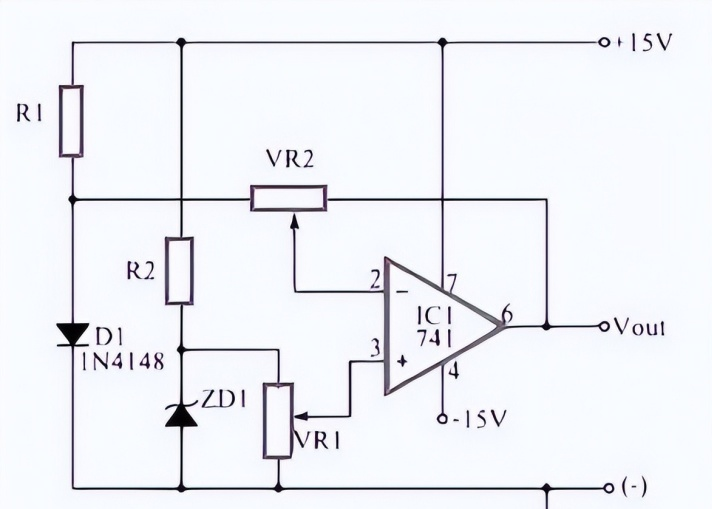
Figure4-1N4148 Diode Circuit
Although it cannot be compared to sensors, it can be highly helpful in some low-precision electrical circuits where it is simply essential to determine whether a component is hot or cold. With the aid of a multimeter, the aforementioned circuit readily measures the temperature.
This circuit makes use of a 1N4148 diode, and VR1 and VR2 should both be adjusted using a thermometer for more precise measurements. It may be measured from volts to the Celsius scale with a multimeter.
2. Other Application of 1N4148 Diode in Common Life
-
Rectification: 1N4148 Diode can be used to convert alternating current (AC) to direct current (DC) in power supplies and other electronic circuits.
-
Signal Demodulation: In radio receivers, it can be used to demodulate amplitude-modulated (AM) signals.
-
Clipping and Clamping Circuits: 1N4148 Diode is used in circuits that limit or clip voltage levels. For example, in audio circuits, it prevents the output signal from exceeding certain levels.
-
Voltage Regulation: It can be worked in conjunction with other components to create a simple voltage regulator.
-
Switching Applications: Due to its fast switching characteristics, the 1N4148 Diode is used in high-frequency circuits and digital logic circuits.
-
Flyback Diode: It can be used as a flyback diode in inductive loads (like relays or motors) to protect against voltage spikes when the load is switched off.
-
Protection Diode: 1N4148 Diode can protect sensitive components from voltage spikes and reverse voltage.
-
Logic Gates: 1N4148 can be used to implement simple logic functions like AND, OR, NOT, etc., in combination with other diodes and resistors.
-
Signal Clipping: In audio and video circuits, it has the function of limiting the amplitude of a signal, effectively "clipping" off the peaks.
-
Voltage Multipliers: It's used in voltage multiplier circuits to generate higher DC voltages from an AC source.
How to Safely Long Run in a Circuit?
It is advised to always check the cathode mark on the 1N4148 diode and the diagram to install it in the correct polarity in the electrical circuit to gain long-term performance from it in your electronics projects. Never exceed the specifications for current and voltage, and always store and operate equipment at or above -65 degrees Fahrenheit and below +175 degrees Fahrenheit.
1N4148 Diode PDF
1N4148 Diode Datasheet

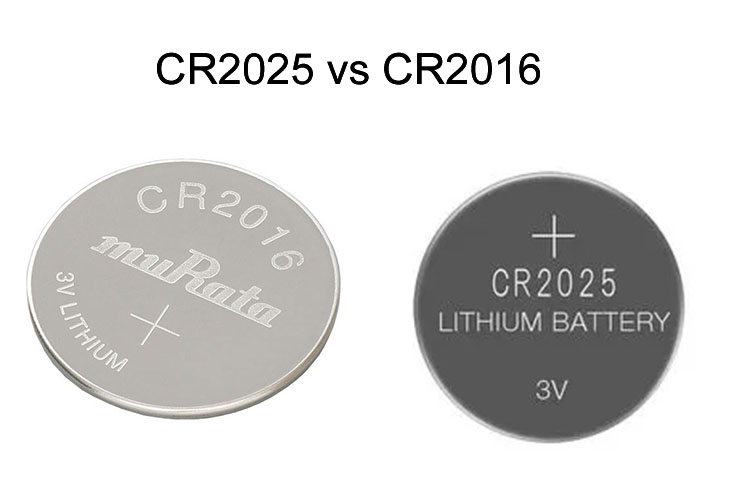 CR2025 vs CR2016: Which one you should choose ?5/8/2024 29
CR2025 vs CR2016: Which one you should choose ?5/8/2024 29CR2025 is a type of lithium coin cell battery. It's a small, round, flat battery commonly used in various electronic devices such as watches, calculators, remote controls, key fobs, and small electronic gadgets. The "CR" in its name stands for lithium manganese dioxide chemistry, and "2025" refers to its dimensions: 20mm diameter and 2.5mm height. These batteries are known for their long shelf life and stable voltage output, making them popular choices for low-power devices.
Read More >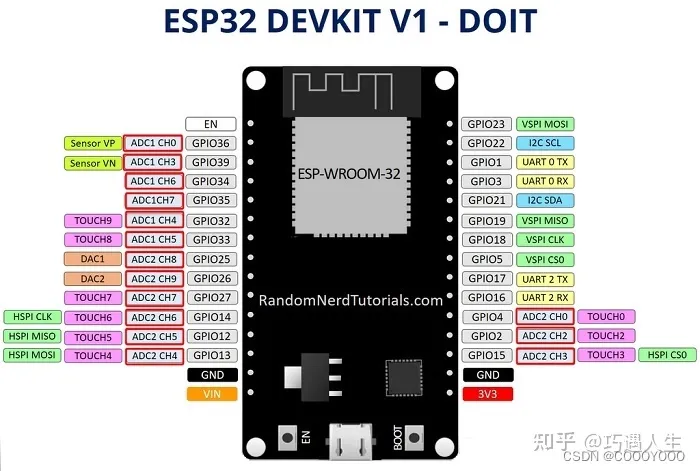 How to resolve the WiFi and ADC2 Sharing Dilemma?4/19/2024 47
How to resolve the WiFi and ADC2 Sharing Dilemma?4/19/2024 47ESP32-CAM can be used in various Internet of Things situations and is suitable for home smart devices, industrial wireless control, wireless Monitoring, QR wireless identification, wireless positioning system signals, and other IoT applications are ideal solutions for IoT applications.
Read More >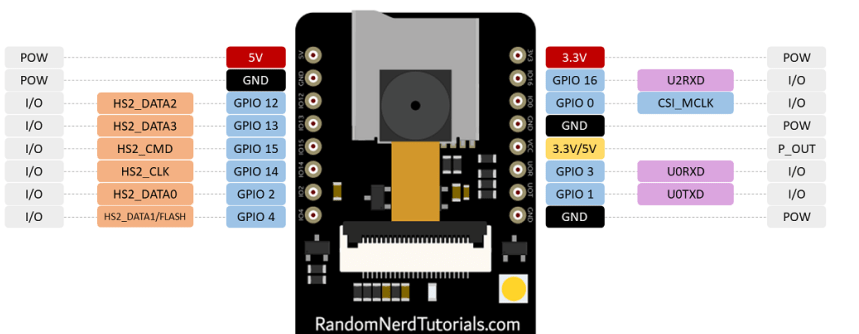 ESP32-CAM Pinout Explanation and How to Use?4/18/2024 139
ESP32-CAM Pinout Explanation and How to Use?4/18/2024 139ESP32-CAM is a development board with an ESP32-S chip, an OV2640 camera, a microSD card slot, and several GPIOs for connecting peripherals. ESP32-CAM is a small-sized camera module. The module can work independently as the smallest system, with a size of only 27*40.5*4.5mm.
Read More >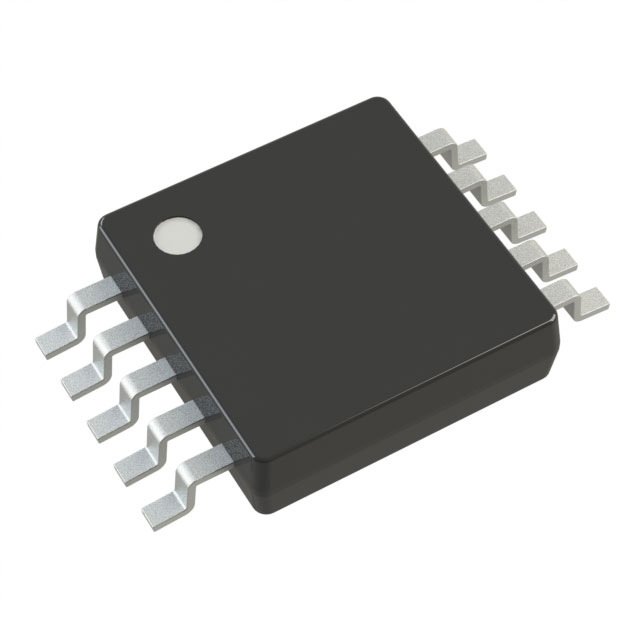 Stand-Alone Linear Li-Ion / Li-Polymer Charge Management Controller MCP738334/9/2024 71
Stand-Alone Linear Li-Ion / Li-Polymer Charge Management Controller MCP738334/9/2024 71The MCP73833/4 is a highly advanced linear charge management controller for use in space-limited, cost sensitive applications. Both a 10-lead, MSOP and a 10-lead, DFN packaging measuring 3 mm by 3 mm are offered for the MCP73833/4. In addition to its tiny size, the MCP73833/4 is perfect for portable applications because it requires a few additional components.
Read More >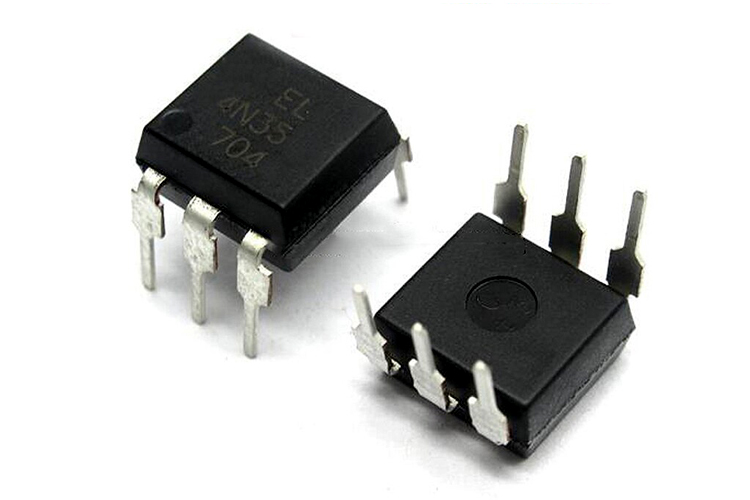 Optocoupler IC 4N35: Pinout, Datasheet, Features and Applications3/26/2024 131
Optocoupler IC 4N35: Pinout, Datasheet, Features and Applications3/26/2024 131In the realm of electronics, where connectivity and isolation are paramount, the 4N35 optocoupler IC stands as a beacon of reliability and versatility. This small yet mighty device plays a crucial role in ensuring signal integrity and safety across a wide range of applications. In this article, we delve into the intricacies of the 4N35 optocoupler IC, exploring its datasheet, pinout, circuit diagram, and diverse uses.
Read More >











